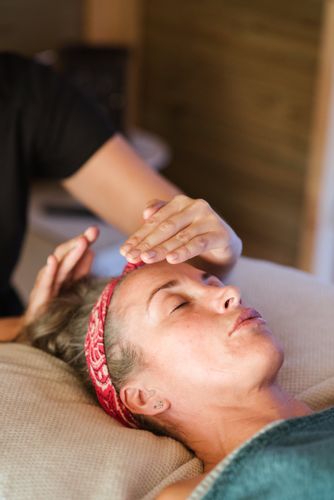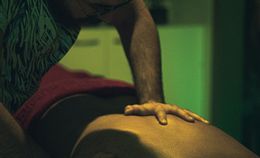Have you ever considered Reiki, but the thought of not knowing what will happen when you first go to a session has been overwhelming? In this article, we are doing to explore what may happen during a Reiki session from choosing a Reiki practitioner, the intake process, to what to expect during a session, and even after.
5 Steps to Reiki Therapy
-
Research: Research the Reiki practitioners and therapists in your area.
-
Choose: Choose a Reiki therapist, and make an appointment.
-
Intake: Do paperwork during your first session.
-
Session: Have your Reiki session.
-
After: Do take measures to care for yourself after sessions.
7 Steps to Researching and Choosing a Reiki Practitioner
When you first decide that Reiki is a therapy that you would like to use, the first two steps are to research and choose a Reiki practitioner. Here is a list of seven steps to achieving these first two steps:
-
List: Make a list of qualifications and attributes that you want in a practitioner.
-
Ask around: Friends and family if they have any recommendations for Reiki practitioners that they have used.
-
Read reviews: Go online and read reviews of different practitioners.
-
Interview: Interview each practitioner to get a feel of who they are as a Reiki practitioner.
-
Select: Select one practitioner to receive treatments from.
-
Set: Set an appointment.
-
Experience: Experience your first Reiki session and treatment.
During your first Reiki treatment, there will be an intake and paperwork to complete. Then you will experience Reiki.
What Happens During Your First Reiki Session?
During a person's first Reiki session, a practitioner will request that you fill out paperwork. This paperwork will generally be informative about who you are:
-
Name
-
Address
-
Phone number
-
Date of birth
-
Emergency contact information
Outside of these five aspects of basic information, the intake process, there may be questions that the Reiki practitioners may ask in order to help create and carry out your treatment plan:
-
Why are you seeking Reiki?
-
Do you live with any health conditions that would cause discomfort if you sit or lay in a particular position?
-
Do you give me permission and consent to use touch during the Reiki session?
-
Are there parts of your body that are sensitive to touch or areas where you would rather not be touched?
Do you see a pattern? Because Reiki practitioners are utilizing an energy-based treatment. To increase the likelihood of a positive effective session, these questions are asked to help you feel comfortable.
The Reiki Experience
According to this one introduction and guide created by the National Center for Complementary and Alternative Medicine. There are many things that you can expect to experience when you go through your first session of Reiki.
3 Ways Reiki Can be Practiced
There are three main ways Reiki can be practiced:
-
On its own: In this way, Reiki is the only treatment and therapy being used.
-
Other therapies: In this way, Reiki is not the only treatment being used. Massage, chiropractic, acupuncture, are three examples of other therapies that may be used alongside Reiki.
-
Medical treatment: In this way, Reiki is used alongside traditional, and conventional medicine like chemotherapy for cancer.
Reiki Practitioners Intention
During a Reiki session, a practitioner uses their hands with the intention of raising a person's Ki both around and in the body of the person they are treating. To what purpose? To move and reduce energy blockages or reduce the levels of negative energies.
8 Things a Reiki Practitioner Does During a Session
Here is a list of eight things you can expect a practitioner to do or to happen during Reiki:
-
Clothing: During a Reiki session, you will always be fully clothed.
-
Choice: You have a choice for how you will be positioned when doing a session. You will have the choice of laying down on your back, laying down on your front, or sitting up.
-
Hands: Practitioners will use their hands by either having them slightly above your body or on your body in different areas.
-
Hand locations: There are 12-15 locations where a practitioner may put their hands. If you want to know which areas may be used during your session, ask. Also, communicate if you are not comfortable with a particular area.
-
Hand positioning: For each location that a practitioner places their hands, their hands will most likely be palms down, and their thumbs and fingers will be extended.
-
Length of time: The length of time for each hand location will most likely be 2-5 minutes. The timing of each hand location used is not precise. Each had a location used until the flow of energy is felt by the practitioner as either being slowed down or stopped entirely in an area on the body.
-
Duration of entire session: The duration and length of a Reiki session can differ based on where a person is receiving it, who is giving the treatment, and also what you are comfortable with. A session could be as short as 20 minutes or as long as 90 minutes.
-
The number of sessions: The number of sessions that you will need is not set in stone. It is often suggested that four weekly sessions but you could also choose to have your sessions closer together or further apart. You may also find that you need less or more than four sessions in order to achieve and experience progress.
5 Locations You Can Get Reiki
There are five different locations where you may get Reiki treatments. Here is a list:
-
Offices
-
Hospitals
-
Clinics
-
Your home
-
Hospice
Reiki From A Distance
The interesting aspect of Reiki is that some practitioners practice the therapy on themselves. Others in their practice, also do Reiki from a distance. This means that if you live in California, but are really drawn to a practitioner in a different state or city, you may still be able to use their services if you are open to distant healing.
What Do You Do After a Reiki Session?
After your session, it is often suggested that you drink plenty of water and enjoy the benefits that come from the experience you just had. There are both benefits and some potential side effects from Reiki. To find out more about them read: Effects and Benefits of Reiki
References:
An Introduction to Reiki. Retrieved March 7, 2019, from https://www.stagereiki.com/_media/b00175-755fae4c2efd400bbe6f908e88a2381b.pdf
Reiki. (2018, December 27). Retrieved March 7, 2019, from https://nccih.nih.gov/health/reiki-info





















